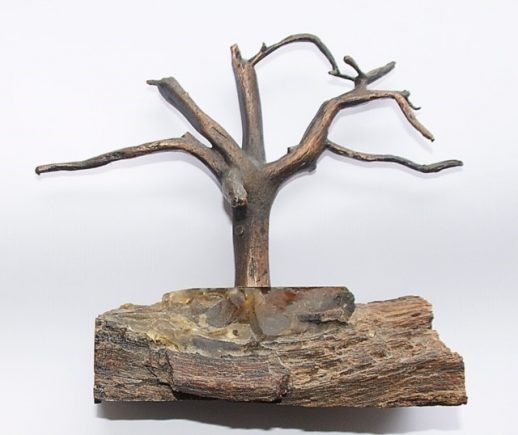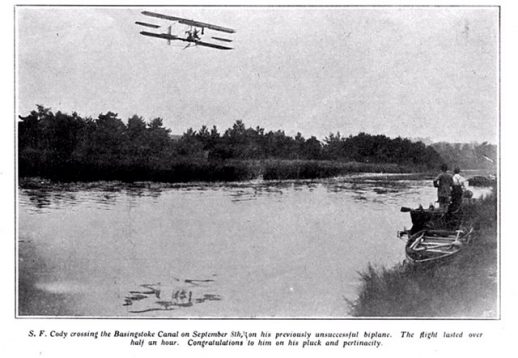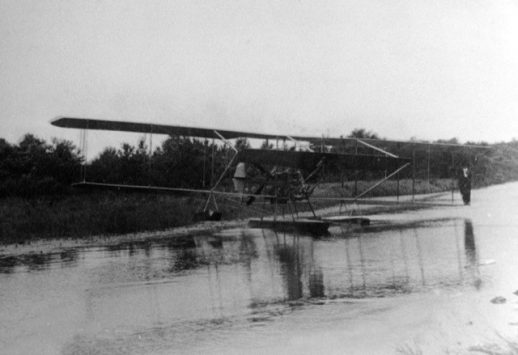Samuel Cowdery was born in 1867 in Iowa. In his youth he worked as a cowboy and in 1888 he started touring with the Wild West act in a circus. He came to Europe eight years later and changed his name to Cody in order to associate himself with the already famous “Buffalo Bill” Cody. He set up his own Wild West touring act with his English partner Lela and her sons, and the “Klondyke Nugget” show was a great success.
Cody’s hobby was kite flying and they grew bigger and bigger until they were capable of carrying a man. He managed to sell these to the War Office for use as observation posts instead of balloons. In 1906 he was appointed Chief Instructor for Kiting at the Balloon School in Aldershot and soon after moved to Laffan’s Plain in Farnborough where the new Balloon Factory was set up. This later became the Royal Aircraft Factory, then Royal Aircraft Establishment.
Cody was still experimenting and his kites began to look more like biplane aircraft and one was flown as a manned glider. He became friends with the Commanding Officer at Farnborough, Colonel Capper, and helped him in the building of an airship, the Nulli Secundus. This made a notable flight to London, but later came to grief and Cody was allowed to use its engine in a powered aircraft that he was designing with Army backing.
British Army Aeroplane No 1 made the first manned flight in England on 16 October 1908. Within 6 months he had flown it over a mile and in August carried passengers, first Col Capper and then the intrepid Lela. His contract with the Army came to an end, but he continued to work using his own funds and his Cody V machine won the 1912 British Military Aeroplane Competition.
Legend has it that when he was doing engine runs he tied his aeroplane to a small Scots pine that grew a few hundred yards from the Swan pub on the A325 in Farnborough. The tree, always known as Cody’s Tree, eventually died and began to fall to bits after WW2. Attempts were made to impregnate the wood in resin (see below), but this made it heavier and not a lot stronger, so finally a full-size replica was cast in aluminium in the RAE’s workshops. This now stands on the QinetiQ site at Ball Hill.
He became a British citizen and took to calling himself Colonel Cody after being erroneously addressed as such when he was introduced to King Edward VII – if it’s good enough for the king….!

His connection with the Basingstoke Canal is probably due to the fact that he lived in Ash Vale only about a quarter of a mile from Alec Harmsworth and his boathouse. No surprise then that when he decided to build a floatplane he got Alec to build the floats. He did stability tests on the aircraft on the canal at Eelmoor Flash, but never flew it as a floatplane. It was rebuilt with a wheeled undercarriage but on 7 August 1913 it suffered a mid-air structural failure which resulted in the death of Cody and his passenger, William Evans, the captain of the England cricket team.
His funeral drew an estimated 100,000 people and his grave stands today in Aldershot Military Cemetery. His house, on the corner of Lysons Avenue and Frimley Road, carries a blue plaque and there is a handsome statue of him outside the Farnborough Air Sciences Museum, not far from where his tree grew. The museum has a full-size replica of his first aircraft – well worth a visit.
Roger Cansdale

